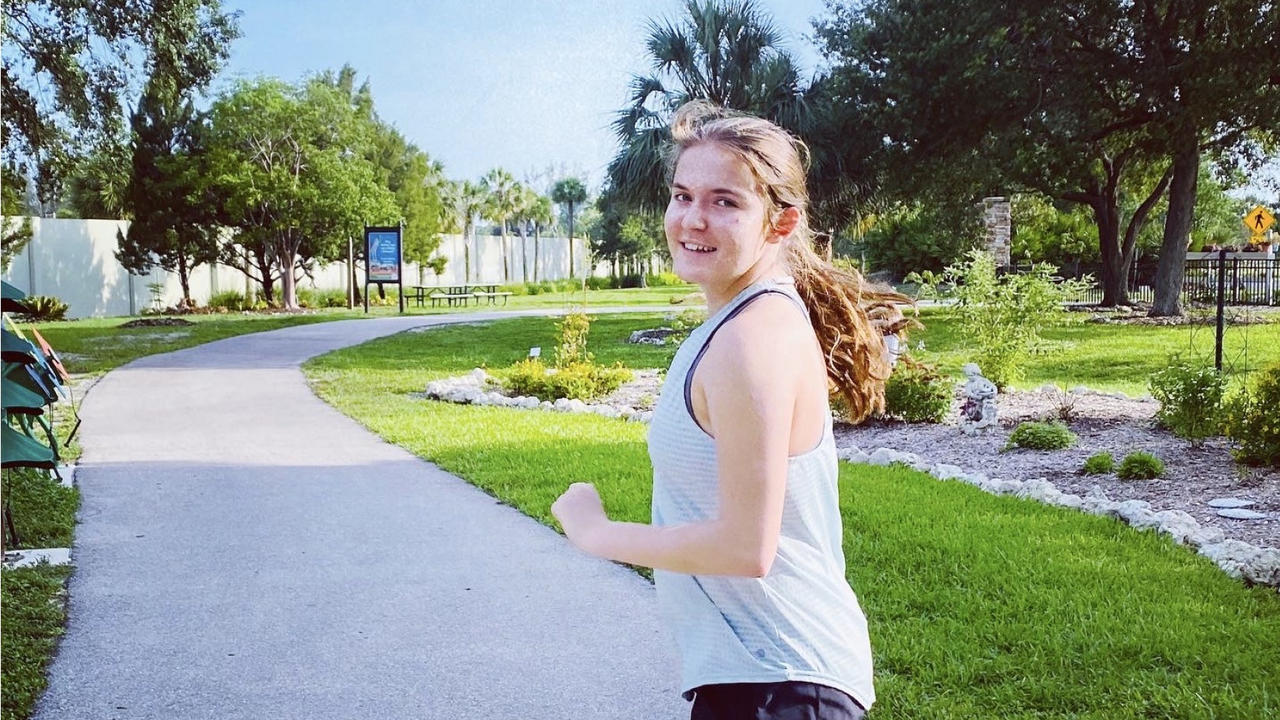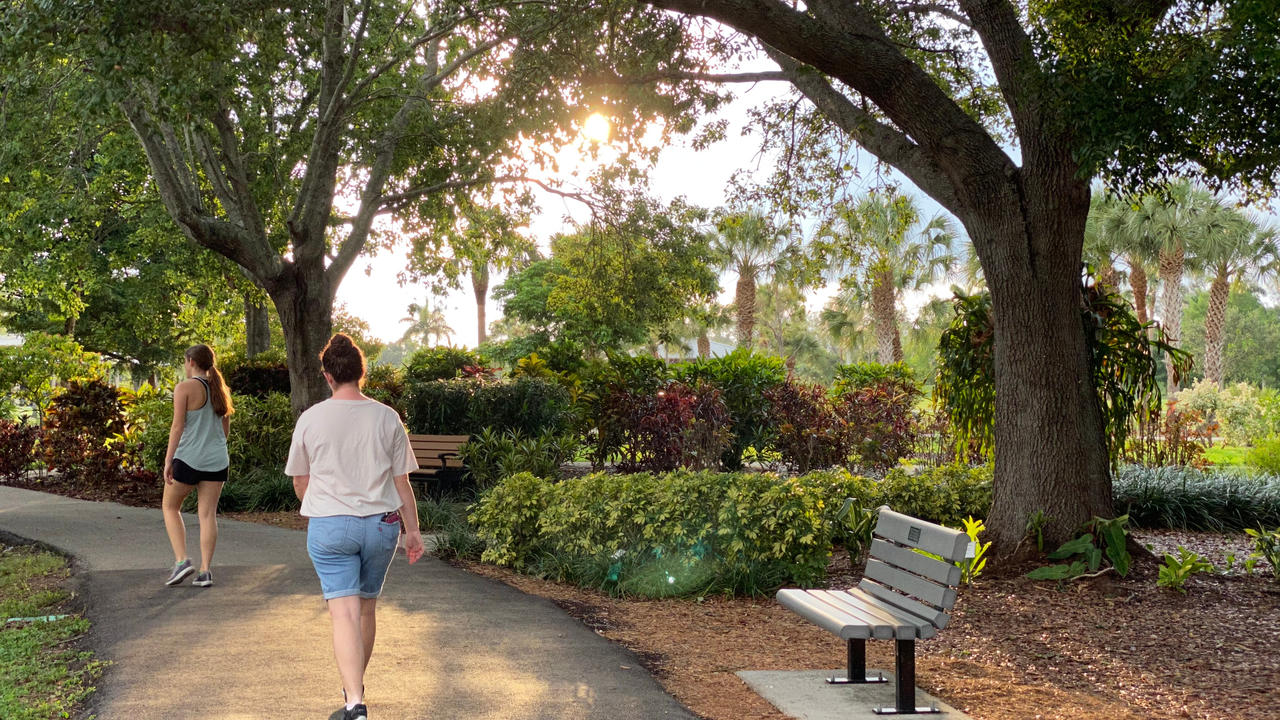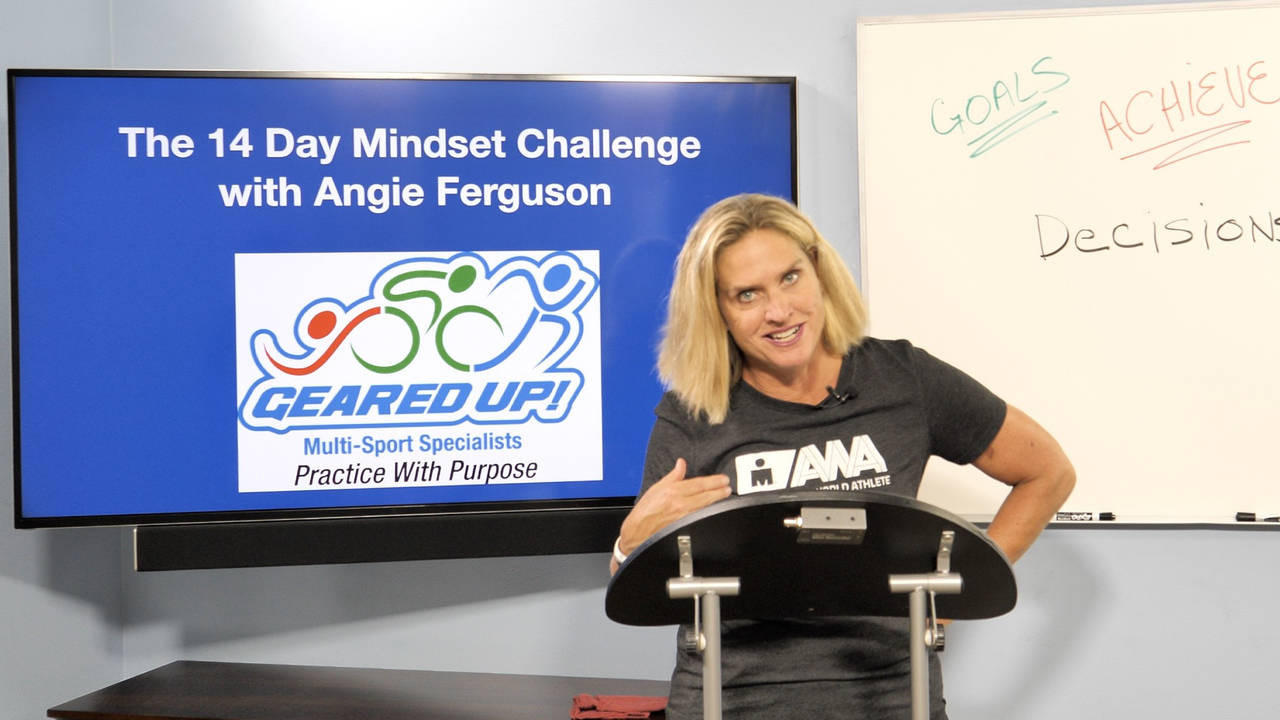Adjust Heart Rate Zones with Training In Summer Heat

It's time for a mid morning Summer Run in Lakes Park - let's hydrate and be careful to consider the heat & humidity in our workout! Photo courtesy of Charly Caldwell II
Tracking your heart rate or knowing how hard you’re working is far more useful than simply following a stopwatch.
For instance, running a 10-min mile at noon outdoors is going to require a lot more effort than running a 10-min mile on an indoor treadmill.
Therefore, heart rates are a fantastic tool that can help dictate workout efforts more accurately.
If you’re using a stopwatch or timer as your source of feedback, you may end up pushing yourself harder than necessary and in turn unconsciously sabotage your own efforts.
However, if you pace yourself using a heart rate monitor, you know when it’s appropriate to push a little harder and when it’s time to back off.
Having said that, there are some factors that affect heart rate training and knowing how to adjust for them can help you maximize your results.
First - de...
The Future of Fitness for Older Adults

Reflection time & sunset on the beach, after a reflective, fruitful and brisk 2 mile beach walk! ❤️
Over the years, society has increasingly understood the importance of maintaining physical well-being throughout life, and the fitness industry has responded with tailored programs to meet the unique needs of older adults.
In the mid-20th century, the perception of aging began to shift.
Previously, older age was often associated with frailty and inactivity, but this perspective started to change.
Thanks to pioneers like Jack LaLanne, older adults began to understand they could remain physically active and vibrant well into their senior years.
The 1990s witnessed a boom in fitness programs designed for older adults.
Gyms and community centers started offering specialized classes, such as water aerobics, yoga and Tai Chi, to cater to this demographic.
These programs not only helped seniors stay active but also provided them with social opportunities, combating feelings of isolation...
Top Trends Dominating the Fitness Market

"You can't change what you don't measure." and it's never been easier to measure success than today (through wearable tech)! (Photo Courtesy of Charly Caldwell II)
If you own a Fitbit, Apple Watch or another kind of wearable technology to track your fitness, you’re already following the number-one predicted fitness trend for the next decade - wearable technology.
Wearable tech has topped the list 4 times in the last 5 years and we don’t expect it to be slowing down any time soon!
More people than ever are wearing 'wearable technology' to track their daily steps, calories burnt and time spent sitting vs standing —
All with the goal to be their best, healthiest self! (YES!)
The recently published fitness trends survey, now in its 16th year, surveys more than 3,000 health and fitness professionals worldwide, and was designed to reveal trends in various fitness environments. 36 potential trends were given as choices, and the top 20 were ranked and published by The American College o...
Running In Heat and Humidity (What to Watch Out For)

It's time for a morning Florida Summer Run in Lakes Park - let's hydrate and be careful to consider the heat & humidity in our workout! Photo courtesy of Charly Caldwell II
Living and training in the summer, especially here in Florida, means you have to learn to deal with hot and humid conditions (morning lows in the 80's and humidity over 70%).
First, some background on why hot weather running may be difficult and can be dangerous if not approached correctly.
"As much as 70% of the total chemical energy using during muscular contraction is released as heat rather than as athletic endeavor."
Your body has to dissipate that heat either through sweat or evaporation or both.
"When you exercise strenuously in even moderate heat (above 60°F; above 55°F for beginning runners), you raise your core body temperature. This triggers a release of blood into the capillaries of your skin to cool you down, which then reduces the blood supply available to your exercising muscles. This basically ...
Evidence Supporting Children and Physical Activity Continues to Grow

Josie takes a break from school work at home (during isolation from COVID-19) to exercise in Lakes Park (Fort Myers) with her dad. Photo Courtesy of Charly Caldwell II.
Physical activity is a natural activity and essential for the healthy growth and development of babies and children.
Bodies are meant to move, and just like their moms and dads, it’s good for little bodies and minds.
Physical activity and regular exercise for children is essential for their physical and emotional health.
Since the guidelines were published back in 2008, evidence supporting the importance of exercise for children continues to grow.
Infants and children need daily physical activity to:
- support brain development
- build strong muscles, joints and bones
- improve coordination, balance and flexibility
- reach and maintain a healthy weight
- promote relaxation and improve sleep quality
- increase confidence, happiness and help build strong social skills, and
- improve academic achievement.
In addition, reg...
Fitness Inspired by Life

Paige & Josie enjoying a walk through the gardens of Lakes Park in Fort Myers, Florida. Photo Courtesy of Charly Caldwell II (Paige & Josie's dad)
Back in the 1960s, Universal and Nautilus built and marketed resistance-training machines for both gyms and home use.
These companies claimed their machines provided superior training results due to their design and ability to isolate muscle groups.
This movement towards muscle isolation created the gym based model of training, which many people use today.
This training model has grown to become very popular and is universally synonymous with weight training.
However, this model falls short for athletes looking to improve performance parameters and for individuals looking for better function with daily living activities.
For example, bodybuilders might look good, but that does not mean that they are necessarily fit or especially strong outside a given movement.
For example, I know many bodybuilders who cannot touch their toes.
This la...
Exercise Snacking?

Taking a beautiful exercise snack (a short 2,000 step walk) in gorgeous Lakes Park in Fort Myers, Florida. Photo Courtesy of Charly Caldwell II
Everyone will read the title and think I am talking about a healthy snack you can have before or after exercise, or mindful snacking throughout the day.
Both are great ideas but neither are true.
What I am talking about is your ability to use exercises just like you would a snack.
Throughout the day, if a rumble emerges in your belly you may reach down for a small apple or a handful of nuts. You can use exercise the same way and insert bits of exercise throughout the day – even if you already go to the gym 5x/week.
Exercise more through snacking?
Yes.
The human body was meant to move and a majority of age related decline can be traced back to a root cause - sedentariness.
Throughout a busy day we are not as active as we were fifty or even a hundred years ago, but we are still consuming on average more calories. We combat this by joini...
The Human Brain is the MOST Amazing Computer Available - Learn How To Use It Wisely

Reflecting on Life in Lakes Park in Fort Myers - A Powerful Practice for Creating & Maintaining a Positive Psychology - Photo Courtesy of Charly Caldwell II
Some people think that a strong body is the biggest strongest asset we have.
I beg to differ.
You can have the strongest body, the healthiest heart or the biggest biceps BUT if you don’t have a strong mind, you will fall short every time.
If you want to make positive changes in your life, your fitness and/or take your training to the next level, you need to think about training your brain.
Training the brain does not involve any Jedi mind tricks. It does however require a desire to change, the right beliefs and a solid plan of action.
First, decide what’s holding you back?
Decide what needs to change. What about your subconscious is holding you back? The idea of success? Self-worth or a lack of belief that you deserve to be successful? Lack of skills? Do you need to learn a new skill to compete at a higher level?
Determine exa...
Staying in Shape is Easier Than Getting In Shape

The running path in Lakes Park, Fort Myers, Florida - so many of our Geared Up! athletes run this beautiful path to stay in shape. Join us if you'd like!
The holidays are typically extremely busy and extremely indulgent.
All the holiday dinners coupled with holiday hospitality events and in short, health and fitness are not generally found at the top of Santa's list.
With December’s month long celebrations, often in excess, many people find themselves committing to firm New Year’s resolutions to get fit and lose weight.
It’s not surprising that many people struggle to maintain a healthy focus in December.
To enjoy the holiday celebrations and maintain a healthy focus, follow a few festive fitness guides and you’ll be ahead come January 1.
It is paramount you maintain your fitness program. One of the hardest things to do when your time is in short supply is to maintain an exercise routine.
If you usually exercise a few times a week, the additional demands on your time now can mean...
Top Performance Requires Mental Training, Too

Ask any coach what distinguishes a good athlete from a great one and they’ll tell you that great athletes are both physically and mentally trained.
In fact, mental training or the mind games we play with ourselves is one of the most overlooked aspects of a well-rounded training program.
We give the topic a lot of lip service but rarely do we actively engage in training to make us mentally stronger.
We could debate physical preparedness vs mental readiness for hours.
I believe that since we associate the physicality we are seeing when watching a sports event, we learn to train the body and ignore the mind.
I went to university on a track and field scholarship and never once did a coach or mentor mention the value of being mentally prepared.
However, learning to cognitively look at physical performance, just as you practice interval sets or tennis volley’s, will enhance your overall performance and better prepare you for whatever obstacles or challenges you may face.
Awareness.
Awar...

